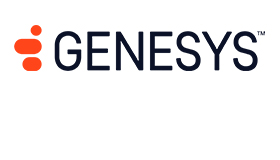High agent turnover can hobble a contact centre. Having a revolving door of staff almost certainly degrades the customer experience. And if you’re losing high-performers, quality takes an even bigger hit.
But with a high churn rate, the customer experience isn’t the only thing that suffers — so does the bottom line. Attrition is costly. Recruiting and onboarding new agents requires time and shifts managers’ focus away from higher-value tasks.
With agent turnover especially high in retail, contact centre managers have their work cut out for them. The volatility associated with holidays and major sales events only compounds the problem. Scaling up quickly to handle the increased volume adds an even bigger batch of new agents to the mix.
For managers, achieving stability in this environment can be a monumental challenge. And if you don’t get it right, internal costs rise, and both employees and shoppers report low satisfaction rates.
In recent years, contact centres have turned to automation to maintain quality by deflecting volume from agents and providing customers with quick responses. Bots and self-service give customers options and keep agents from handling routine requests like tracking an order delivery.
That allows agents to focus on more complex interactions, like handling the return of a defective product or answering a shopper’s questions about product assembly. Complex interactions require a higher skill level, which increases the pressure on managers to onboard quickly, train well and retain high-performing agents who understand your products, your brand and your shoppers.
Contact centre solutions with integrated workforce engagement tools can help managers meet the challenge at scale. A robust workforce engagement solution provides clear advantages for onboarding new hires, maintaining long-term performance and empowering agents to provide shoppers with a positive brand experience — all of which make agents more likely to stay.
Effective workforce engagement boosts more than retention rates. According to Frost & Sullivan surveys, organisations that adopt workforce engagement solutions are 82% more likely to provide a better customer experience. They’re also 96% more likely to achieve overall profitability.
1. Enhance Service With a Unified Ecosystem
To maintain stability and consistency in the customer experience, your agents need a simplified ecosystem that includes all channels and relevant data sources in a unified desktop. When agents can switch channels in a single platform without losing the conversation history, they work more efficiently and provide a more fluid experience for customers.
A rich integration with your CRM and other systems of record can also reduce the amount of time your agents spend searching for information, which leads to quicker resolutions and more satisfied customers.
With access to relevant customer data, such as purchasing or browsing history, the agent has helpful context for understanding the customer’s full shopping journey.
For example, a customer who calls with problems assembling a product might have already browsed the self-service options, chatted with a bot and talked with another agent earlier in the day. They also might be a long-term repeat customer.
Seeing that entire history provides the agent with more insight into the customer’s journey and likely frustration. Armed with this information, the agent is prepared to engage with empathy, and the interaction is more likely to have a positive outcome.
For new agents, this unified ecosystem accelerates onboarding and empowers them to resolve customer inquiries quickly. As a result, they can engage customers with confidence and represent your brand well. That empowerment also helps new agents feel invested in your brand.
2. Support Your Team With Agent Assist
A satisfying customer experience depends on a well-trained agent. But even the best agents benefit from additional help during each interaction. You can provide it with agent assist, an AI-powered engine that assesses the customer’s intent based on the conversation flow to surface useful articles and answer relevant questions.
It can give agents guidance on next-best steps to help them meet the customer’s needs more quickly and with less effort.
For example, when a shopper calls to ask about a product’s compatibility with an item the shopper already owns, the agent-assist tool can display a list of compatible products for the agent and suggest a question that will help the shopper choose the right model.
More advanced agent-assist tools also display confidence scores to help the agent assess the likelihood that a suggestion is a good fit for the customer’s needs. Agents can rate the usefulness of the suggestions, which helps improve them over time through machine learning.
Providing in-the-moment assistance helps new agents adhere to your organisation’s best practices and empowers them to protect your brand from day one. As a result, they’re more likely to feel successful and satisfied in their job, which makes them more likely to stay.
3. Target Agent Coaching With Analytics
Customer interactions are loaded with information; even the best agents can miss some of it. New agents are even more likely to overlook a key piece of information or misunderstand the customer’s intent. They also might have problems with script adherence. These lapses are ideal targets for coaching — if managers are aware of them.
Listening to a random sample of calls can give a manager a decent overall impression of an agent’s performance, but it won’t catch every coaching opportunity. It also requires time that could be spent on higher-value tasks.
Speech and text analytics can automate the process to help managers pinpoint agents’ mistakes, oversights and instances of non-adherence. Running on all agent-led interactions, the analytics can flag problems and score the agent on the metrics that matter most.
Sentiment analysis can determine whether the customer had a positive or negative experience. After spotting a potential issue from the analytics, the manager can examine the individual interaction more closely and offer the agent coaching right away.
Solutions that integrate skill development tools into the agent’s desktop make continuous learning more convenient. Managers can assign modules to individual agents as the need arises, or they can set up rules to ensure all agents on a service line receive training on an important topic at the right time.
4. Keep Agents Engaged and Empowered
It’s not just customers who have high expectations today — employees do, too. And the increased mobility of the globalised workforce means employers must work harder to recruit and retain agents.
Reducing turnover can save managers time and help maintain customer service quality. Empowering agents to self-manage their schedules and drive their own performance can lead to greater job satisfaction and a stronger commitment to the organisation.
It can also reduce the burden of administrative tasks for managers, allowing them to focus on more impactful work.
Gamification, a common component of workforce engagement solutions, can make work more engaging and even fun. More importantly, it uses motivational tools to nurture agents. Agent dashboards that display KPIs can serve as a personalised professional development hub.
Agents can monitor their own progress and see the impact of skill development on their personal metrics in real time. They can also compare their performance to their peers and challenge themselves to improve.
The result is a more engaged team of agents who drive their own continuous improvement. And that makes them less likely to leave.
Conclusion
For retail contact centres, maintaining stability and consistency in the customer experience is a never-ending challenge. Agent attrition makes it harder to achieve.
New agents might underperform, which could affect handle times, first-call resolution stats and other key performance metrics — leaving some customers less than satisfied. You can minimise that risk and boost agent retention with workforce engagement tools.
When agents are more engaged and feel supported with the tools and information they need to perform well, they’re more likely to deliver an outstanding personalised customer experience. They’re also more likely to stay with you. Long term, it’s a reliable strategy for happier customers and higher profitability.
This blog post has been re-published by kind permission of Genesys – View the Original Article
For more information about Genesys - visit the Genesys Website
Call Centre Helper is not responsible for the content of these guest blog posts. The opinions expressed in this article are those of the author, and do not necessarily reflect those of Call Centre Helper.
Author: Genesys
Published On: 7th Mar 2022 - Last modified: 8th Mar 2022
Read more about - Guest Blogs, Genesys






 Genesys empowers more than 8,000 organisations in over 100 countries to improve loyalty and business outcomes by creating the best experiences for their customers and employees. Through Genesys Cloud, the AI-Powered Experience Orchestration platform, Genesys delivers the future of CX to organisations of all sizes so they can provide empathetic, personalised experience at scale. As the trusted platform that is born in the cloud, Genesys Cloud helps organisations accelerate growth by enabling them to differentiate with the right customer experience at the right time, while driving stronger workforce engagement, efficiency and operational improvements.
Genesys empowers more than 8,000 organisations in over 100 countries to improve loyalty and business outcomes by creating the best experiences for their customers and employees. Through Genesys Cloud, the AI-Powered Experience Orchestration platform, Genesys delivers the future of CX to organisations of all sizes so they can provide empathetic, personalised experience at scale. As the trusted platform that is born in the cloud, Genesys Cloud helps organisations accelerate growth by enabling them to differentiate with the right customer experience at the right time, while driving stronger workforce engagement, efficiency and operational improvements. 












